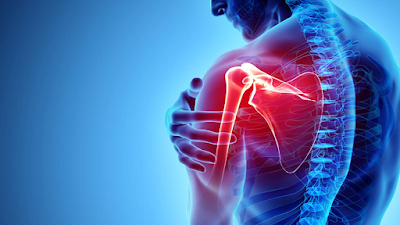How Does A Physical Therapist Help Shoulder Pain And Rotator Cuff Injuries?
You are not alone if you are suffering from a rotator cuff injury or shoulder pain. These common ailments can significantly impact a person's quality of life. When left untreated, shoulder pain and rotator cuff injuries can cause chronic pain, weakness, limited mobility, and even challenge simple tasks.
Fortunately, physical therapy for shoulder pain can help you. Physical therapists are experts in diagnosing and treating multi-skeletal conditions and can help patients deal with shoulder pain and rotator cuff injuries. In this blog, we will talk about how physical therapists and physical therapy can help you. Let's begin.
What Is A Rotator Cuff Injury?
A rotator cuff is a group of muscles and tendons surrounding your shoulder joint, responsible for its movement and stability. A rotator cuff injury occurs when one of these muscles or tendons is hurt or damaged. There are different causes of rotator cuff injuries, including: -
Tendinitis - It occurs due to the inflammation of tendons in your rotator cuff from an excessive workload or overuse. Shoulder tendinitis is mostly among athletes participating in sports like swimming, volleyball, or tennis.
Bursitis - It is the irritation or inflammation of the fluid-filled sac, also called the bursa, between your shoulder joint and the rotator cuff tendons.
General Wear and Tear - As you age or indulge in repetitive movement activities, the daily wear and tear can cause rotator cuff and injury.
Acute Tear - If you pick something with a jerking motion or fall on your arm, there is a high chance you may tear your rotator cuff. Acute tears can occur with injuries like a broken collarbone, fracture, or dislocated shoulder.
Degenerative Tear - Most tears take place as a result of tendons wearing down with time. It generally occurs as you age but is painless (in most cases). Rotator cuff tears or injuries are primarily common in the dominant arm. If you have a degenerative tear in one of your arms, there is a huge chance you may get a rotator cuff tear in the opposite arm, too, even if you don't experience any pain. Some common factors contributing to degenerative tears include:-
Lack of blood supply
Repetitive stress
Shoulder Impingement - It can occur when the rotator cuffs rub or catch on the bones in the shoulder. Shoulder impingement can be very painful as the tendons are swollen and injured. If left untreated, shoulder impingement can lead to rotator cuff tears.
Role Of Physical Therapy In Treating Shoulder Pain And Rotator Cuff Injury
While physical therapy may not completely help cure a rotator cuff injury, it does strengthen the shoulder muscles and restore their range of motion and mechanics.
The first step in physical therapy treatment for rotator cuff injuries is to reduce pain and inflammation. Ice, heat, ultrasound, or electrical stimulation can achieve it. Once the pain is reduced and under control, your physical therapist will begin restoring the shoulder's function through a combination of exercises and manual therapy exercises. These exercises can include: -
Range of Motion Exercises - These exercises improve the affected shoulder joint's range of motion and flexibility. Examples of these exercises include wall climbs, pendulum exercises, etc.
Strengthening Exercises - These exercises are designed to improve the strength of the muscles in the rotator cuff. Examples of these exercises include external rotation exercises, scapular strengthening exercises, etc.
Stretching Exercises - These exercises improve flexibility and reduce tension in the muscles that surround the shoulder joint. Examples include cross-body stretches, sleeper stretches, etc.
Joint Mobilization - It is a manual therapy that involves using gentle, controlled movements to the range of motion in the joint. It helps patients with restricted or stiff shoulder joints.
Soft Tissue Mobilization - It involves putting slight pressure on the soft tissues surrounding the shoulder joint, reducing tension and improving mobility.
During physical therapy for rotator cuff in Michigan, your therapist will also focus on scapular strengthening, among other things. The scapula provides the foundation for the shoulder's stability.
Are You the Right Candidate For Physical Therapy?
If your doctor recommends you go for physical therapy for shoulder pain or rotator cuff injury, your therapist will examine certain things to ensure you are the perfect candidate for physical therapy. He can begin with analyzing your strength and range of motion, functional motion and abilities like reaching and behind your back, etc., and then develop a personalized physical therapy plan for you.
Wrapping Up
In conclusion, physical therapy offers a great solution to shoulder pain, rotator cuff injuries, and tears. By addressing the root cause of the damage and using a combination of exercises, manual therapy, and modalities, physical therapists can effectively alleviate pain, improve the range of motion, and restore function to the shoulder joint.
Back2Health provides the best physical therapy treatments for shoulder pain and rotator cuff. So if you are in pain because of your shoulder, don't waste any more time and book an appointment for physical therapy for a rotator cuff in Michigan.





Comments
Post a Comment